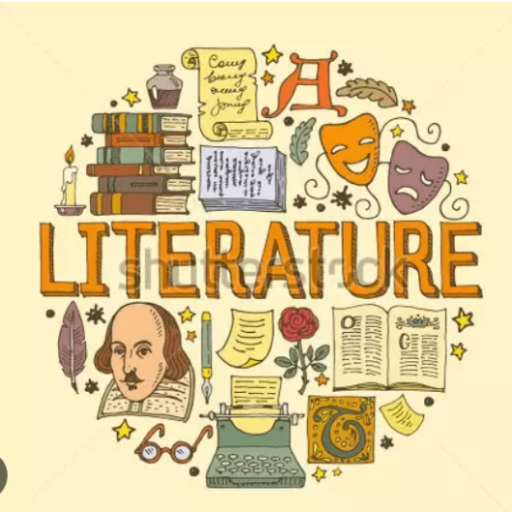Shakespearean comedies and tragedies are two distinct genres of plays that were popularized by the renowned playwright William Shakespeare. Despite their differences in tone and subject matter, these genres share several common elements that contribute to their enduring appeal.
In this article, we will explore the similarities between Shakespearean comedies and tragedies, shedding light on the recurring themes, character types, and narrative structures that unite these two forms of dramatic literature.
Advertisement
What Do Shakespearean Comedies and Tragedies Share?
The Essence of Shakespearean Comedies and Tragedies
Shakespearean comedies and tragedies are timeless masterpieces that continue to captivate audiences around the world.
Advertisement
While comedies aim to entertain and evoke laughter, tragedies delve into darker themes and explore the human condition through conflict and suffering.
Advertisement
Both genres, though distinct in their objectives, showcase Shakespeare’s unparalleled ability to craft compelling narratives and portray complex characters.
Advertisement
The Themes that Bind
Themes serve as the underlying threads that connect Shakespearean comedies and tragedies. Love, ambition, betrayal, fate, and the complexities of human relationships are recurrent motifs found in both genres.
These universal themes resonate with audiences across cultures and generations, highlighting Shakespeare’s profound understanding of the human experience.
In comedies like “A Midsummer Night’s Dream” and “Twelfth Night,” love takes center stage, often resulting in mistaken identities, humorous misunderstandings, and convoluted plots.
Similarly, tragedies like “Romeo and Juliet” and “Macbeth” explores the destructive power of love, unbridled ambition, and the fatal consequences of human flaws.
Shared Character Archetypes
Shakespearean comedies and tragedies feature a wide array of characters that are often archetypal in nature. These archetypes embody universal traits and personas, allowing the audience to relate to and understand the characters on a deeper level.
The Fool:
A common character archetype found in both comedies and tragedies, the Fool provides comic relief and insightful commentary. In comedies, the Fool often uses wit and wordplay to amuse the audience, while in tragedies, the Fool serves as a voice of reason and moral compass amidst the chaos.
The Hero/Heroine:
Whether in a comedy or tragedy, Shakespeare’s plays frequently revolve around a central protagonist who faces various challenges and undergoes personal growth throughout the story.
The hero/heroine embodies virtues and flaws that make them relatable and memorable to the audience.
The Villain: What Do Shakespearean Comedies and Tragedies Share?
Both genres showcase antagonistic characters who fuel conflict and contribute to the unfolding drama. In comedies, the villains tend to be less malevolent and serve as obstacles for the protagonists to overcome.
Tragic villains, on the other hand, are often driven by ambition, jealousy, or revenge and ultimately meet their downfall.
The Power of Language
One of Shakespeare’s greatest gifts was his mastery of language. In both comedies and tragedies, Shakespeare’s use of eloquent dialogue, poetic verse, and clever wordplay elevate the plays to artistic excellence.
The language employed by the characters not only conveys their thoughts and emotions but also serves as a vehicle for humor, wit, and profound insights.
Shakespearean comedies often feature puns, double entendres, and bawdy humor, adding levity to the storyline. Tragedies, however, employ language to evoke powerful emotions, heighten tension, and convey the weight of dramatic moments.
The soliloquies in tragedies, such as Hamlet’s famous “To be or not to be” speech, showcase the depth of Shakespeare’s linguistic prowess.
Structural Similarities
Shakespearean comedies and tragedies share certain structural elements that contribute to the overall impact of the plays.
Both genres often follow a five-act structure, which includes an exposition, rising action, climax, falling action, and denouement.
This structure allows for the gradual development of the plot and characters, building suspense and leading to a satisfying resolution.
Additionally, both comedies and tragedies frequently employ subplots to enrich the narrative and provide contrast to the main storyline. These subplots may introduce secondary characters, explore different thematic elements, or add comedic relief to the overall dramatic tension.
Conclusion: What Do Shakespearean Comedies and Tragedies Share?
Shakespearean comedies and tragedies, though distinct in tone and subject matter, share several commonalities that highlight the brilliance of the playwright.
Through recurring themes, archetypal characters, masterful language, and structural similarities, Shakespeare created works that transcend time and continue to resonate with audiences today.
Whether evoking laughter or invoking deep emotions, his plays showcase the complexities of the human condition and offer profound insights into the universal aspects of life.
Frequently Asked Questions
Shakespearean comedies typically have a lighthearted and humorous tone, focusing on the triumph of love and the resolution of conflicts. Tragedies, on the other hand, have a darker and more somber tone, exploring themes of suffering, betrayal, and inevitable downfall.
Yes, Shakespeare occasionally incorporated elements of both comedy and tragedy in his plays. Some examples include “The Merchant of Venice,” which combines comedic elements with themes of prejudice and justice, and “Twelfth Night,” which explores love and mistaken identity while also featuring moments of melancholy.
Shakespeare’s choice to write both comedies and tragedies allowed him to explore a wide range of human experiences and emotions. By delving into the lighter and darker aspects of life, he created a rich and nuanced body of work that continues to resonate with audiences.
Yes, several motifs and symbols appear in both genres. For instance, the use of disguises and mistaken identities is a recurring motif in comedies like “Twelfth Night” and tragedies like “Othello.” Symbolism, such as the frequent depiction of light and darkness, also adds depth and complexity to the plays.
Shakespeare’s tragicomedies, also known as “romances,” blend elements of both comedy and tragedy. These plays, including “The Winter’s Tale” and “The Tempest,” explore themes of forgiveness, redemption, and the power of transformation. The tragicomic genre allows Shakespeare to challenge traditional storytelling conventions and provide audiences with a unique and thought-provoking theatrical experience.

